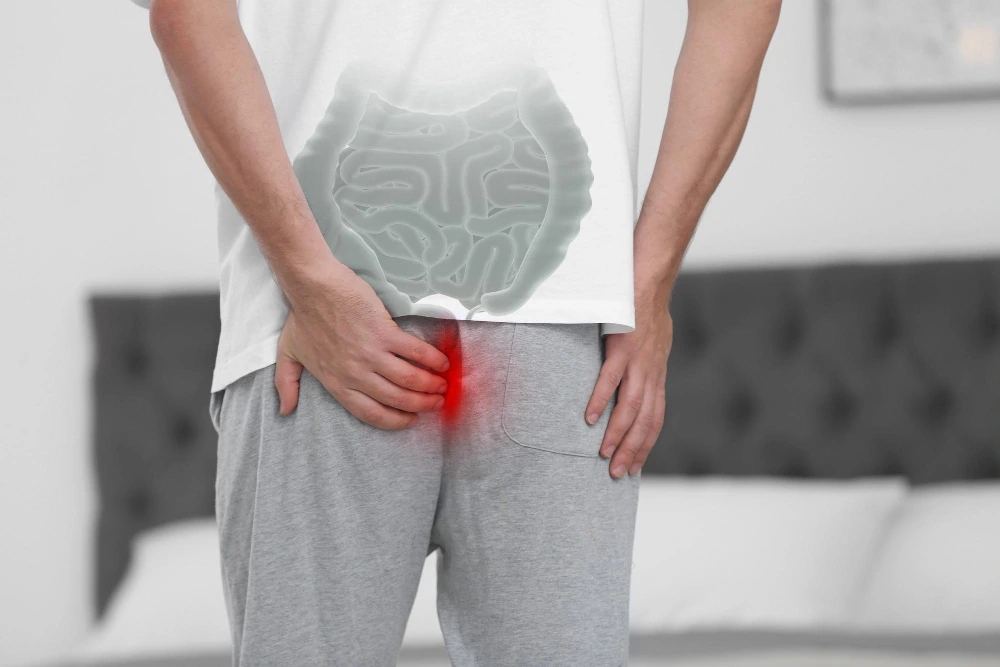Introduction
Piles, also known as hemorrhoids, are one of the most common anorectal conditions affecting people of all ages. They occur due to the swelling and inflammation of veins in the rectum and anus, leading to discomfort, pain, itching, and bleeding. Many patients silently suffer from piles due to embarrassment or lack of awareness, but with modern medical care, the condition is highly treatable.
At Kolekar Hospital, Chembur, we specialize in advanced, painless, and effective piles treatment using the latest technologies and experienced proctologists. This blog provides a comprehensive guide on piles treatment in Chembur, covering causes, symptoms, diagnosis, prevention, and the best available treatment options.
What are Piles?
Piles (hemorrhoids) are swollen blood vessels in the lower rectum or anus. Depending on their location, they are classified into:
- Internal Piles: Located inside the rectum, usually painless but may cause bleeding.
- External Piles: Found under the skin around the anus, often painful and itchy.
- Prolapsed Piles: Internal piles that protrude outside the anus, leading to discomfort.
- Thrombosed Piles: External piles with blood clots, causing severe pain and swelling.
Causes of Piles
Several lifestyle, dietary, and medical factors can lead to piles. Common causes include:
- Chronic constipation or diarrhea – straining during bowel movements increases pressure.
- Low-fiber diet – lack of dietary fiber leads to hard stools.
- Sedentary lifestyle – prolonged sitting reduces blood circulation.
- Obesity – excess weight puts pressure on pelvic veins.
- Pregnancy – increased abdominal pressure and hormonal changes.
- Heavy lifting – frequent strain on the abdominal muscles.
- Genetics – family history of piles or weak venous walls.
Symptoms of Piles
Recognizing early signs can help prevent complications. Symptoms may vary depending on the type and severity of piles.
Common Symptoms Include:
- Bright red bleeding during or after bowel movement.
- Itching or irritation around the anus.
- Pain or discomfort while sitting.
- A lump or swelling near the anus.
- Mucus discharge after bowel movement.
- Feeling of incomplete evacuation.
Diagnosis of Piles at Kolekar Hospital, Chembur
At Kolekar Hospital, our specialists follow a systematic diagnostic approach to confirm piles and rule out other conditions such as fissures, fistulas, or colorectal cancer.
Diagnostic Steps Include:
- Medical History & Physical Examination – assessment of symptoms and lifestyle.
- Digital Rectal Examination (DRE) – to detect lumps or swelling.
- Proctoscopy/Anoscopy – to visually examine the rectal canal.
- Colonoscopy (if necessary) – to rule out other gastrointestinal conditions.
Piles Treatment in Chembur at Kolekar Hospital
Treatment depends on the stage and severity of piles. At Kolekar Hospital, we provide personalized piles treatment in Chembur using conservative, non-surgical, and surgical methods.
1. Conservative/Medical Management
Suitable for early-stage piles (Grade I–II):
- High-fiber diet & hydration – promotes soft stools.
- Stool softeners/laxatives – reduce straining.
- Topical ointments & suppositories – relieve itching and pain.
- Warm sitz baths – soothe irritation.
2. Minimally Invasive Procedures
For Grade II–III piles, we offer advanced day-care procedures:
| Procedure | Description | Benefits |
| Rubber Band Ligation | Bands placed around piles to cut off blood supply | Quick, effective, no major cuts |
| Sclerotherapy | Injection of solution to shrink hemorrhoids | Painless, minimal downtime |
| Infrared Coagulation (IRC) | Heat therapy to seal blood vessels | Non-invasive, safe |
| Laser Treatment | Laser energy shrinks and seals piles | Painless, bloodless, same-day discharge |
3. Surgical Treatments
For severe or recurrent piles (Grade III–IV):
- Hemorrhoidectomy – surgical removal of piles.
- Stapled Hemorrhoidopexy – stapling technique to reposition prolapsed piles.
- Doppler-Guided Hemorrhoidal Artery Ligation (DG-HAL) – targeted artery ligation for faster recovery.
Why Choose Kolekar Hospital for Piles Treatment in Chembur?
At Kolekar Hospital, we prioritize patient comfort, safety, and long-term relief.
Our Advantages:
- Experienced colorectal surgeons and proctologists.
- Advanced laser and minimally invasive technologies.
- Same-day discharge for most procedures.
- Hygienic and patient-friendly environment.
- Affordable treatment packages.
- Personalized care and lifestyle guidance.
Preventing Piles – Expert Tips
While piles are treatable, prevention is always better.
Lifestyle & Dietary Tips:
- Eat a high-fiber diet (fruits, vegetables, whole grains).
- Drink at least 8–10 glasses of water daily.
- Avoid prolonged sitting or straining during bowel movements.
- Exercise regularly to improve circulation.
- Avoid spicy foods and alcohol.
- Do not delay the urge to pass stools.
- Maintain healthy body weight.
Frequently Asked Questions (FAQs) on Piles Treatment in Chembur
1. Can piles go away without treatment?
Mild cases may improve with diet and lifestyle changes, but advanced piles require medical intervention.
2. Is laser piles treatment painful?
No, laser treatment is minimally invasive, virtually painless, and allows faster recovery.
3. How long does recovery take after piles surgery?
With modern techniques, most patients recover within 3–7 days.
4. Can piles come back after treatment?
Recurrence is rare with proper medical management and lifestyle modifications.
5. Is piles treatment safe during pregnancy?
Yes, but treatment depends on the stage. Our specialists offer safe and effective solutions for pregnant women.
Conclusion
Piles can significantly affect quality of life, but with timely diagnosis and modern medical treatment, complete relief is possible. If you are looking for piles treatment in Chembur, Kolekar Hospital offers advanced, minimally invasive, and patient-friendly solutions for long-term comfort and recovery.
👉 Don’t ignore the symptoms. Book your consultation today at Kolekar Hospital, Chembur, and take the first step towards a healthy, pain-free life.
![]()







